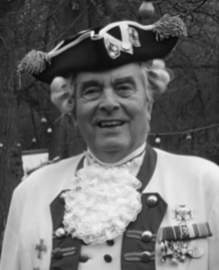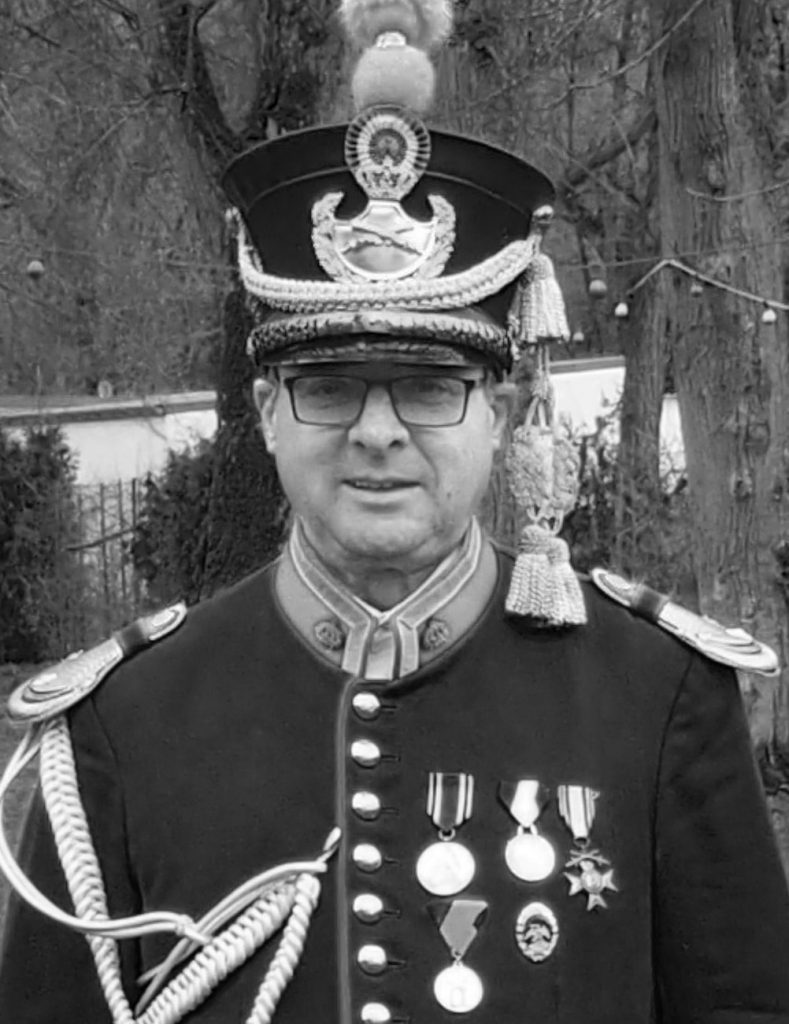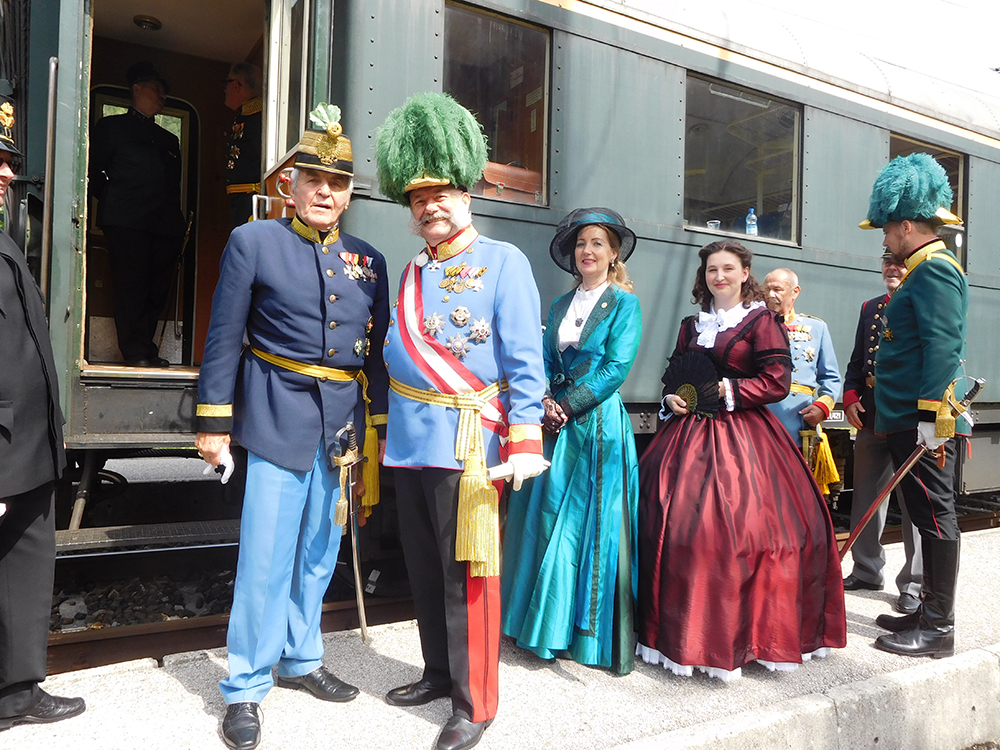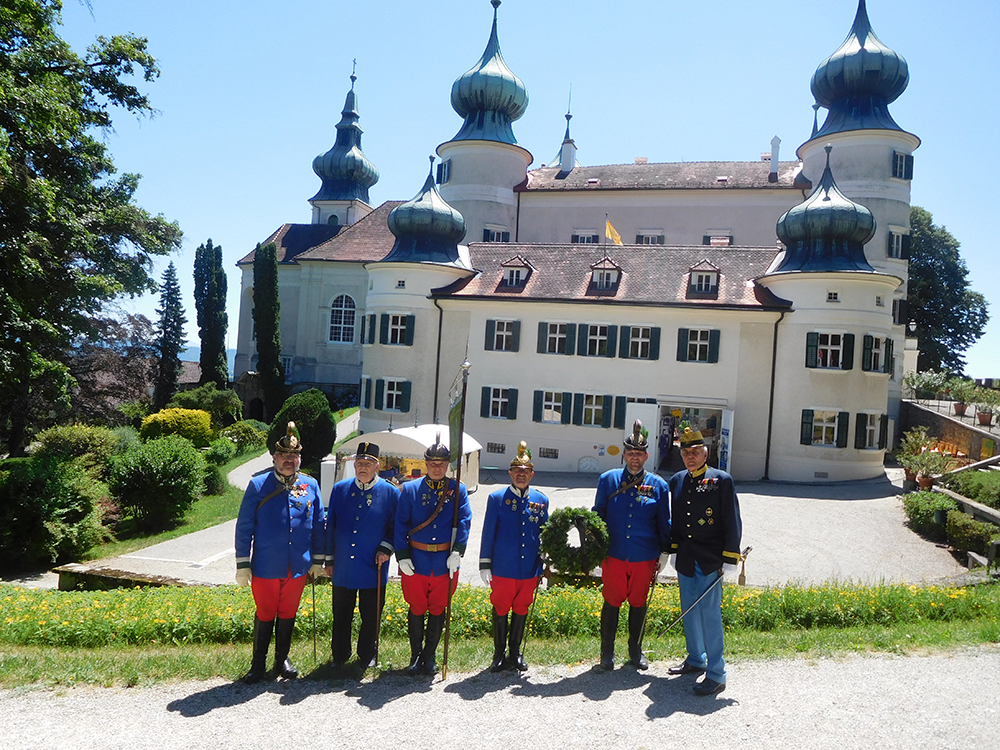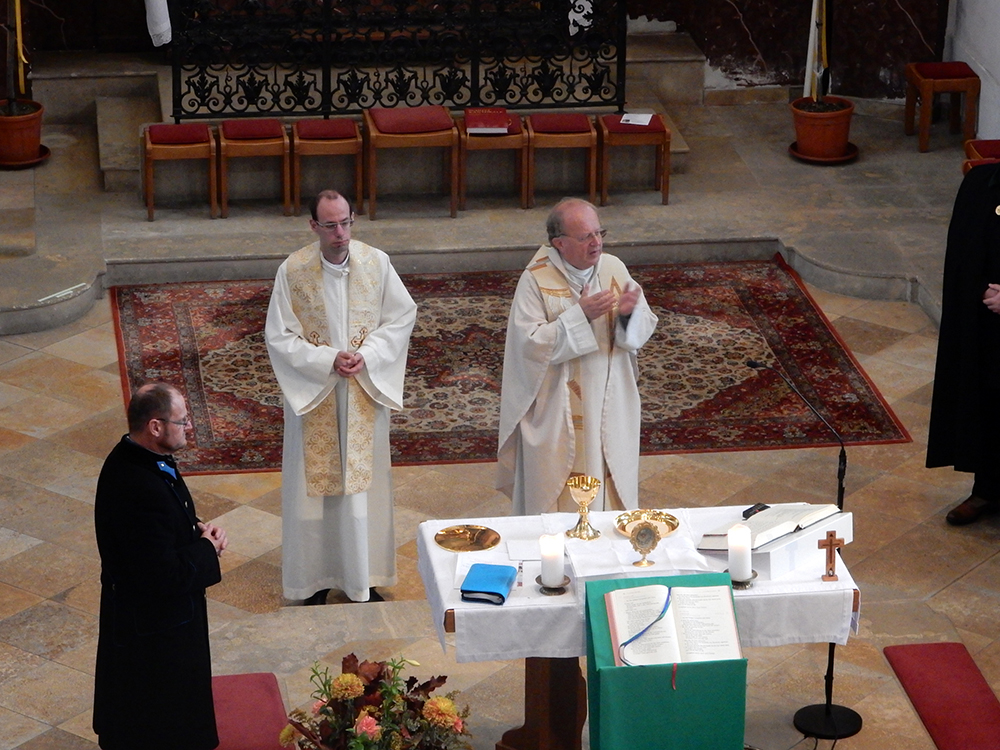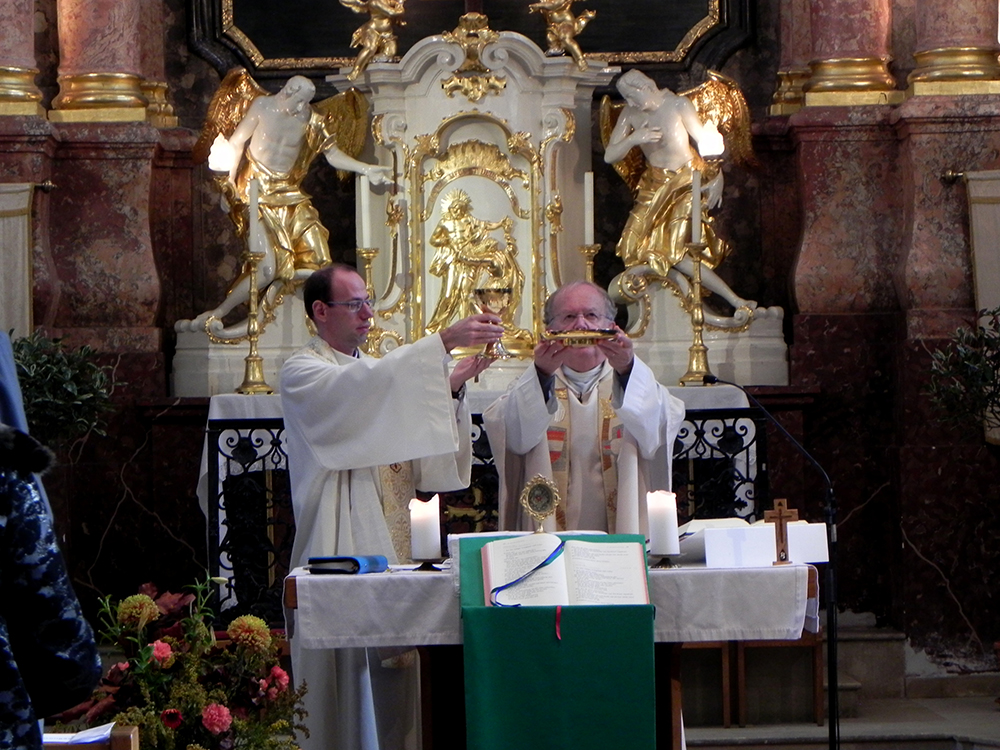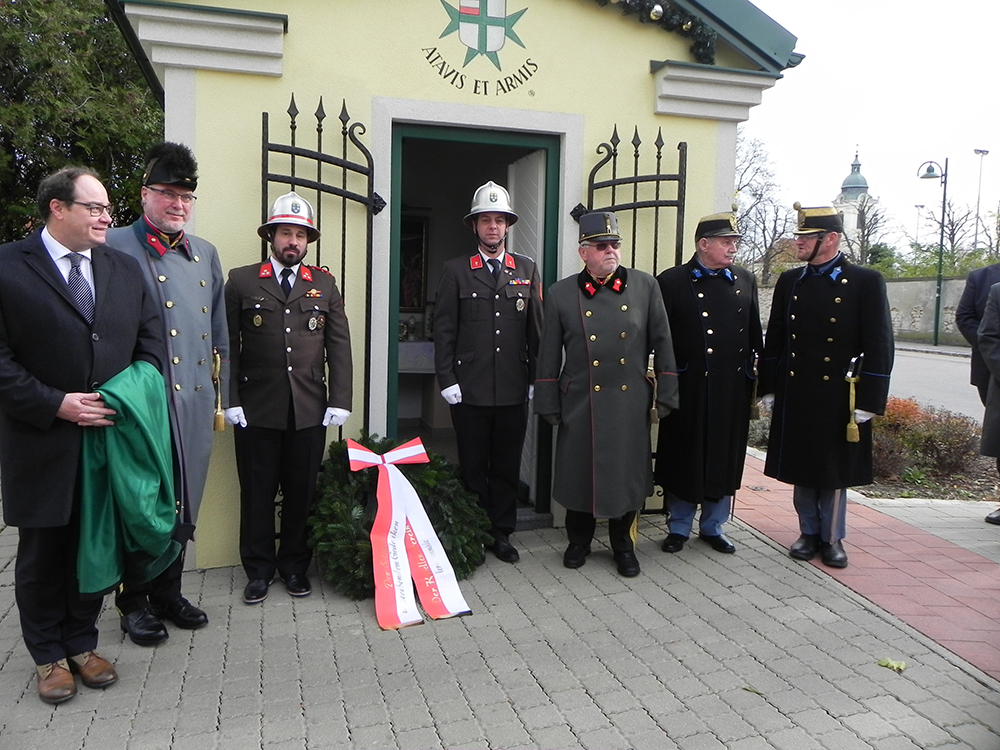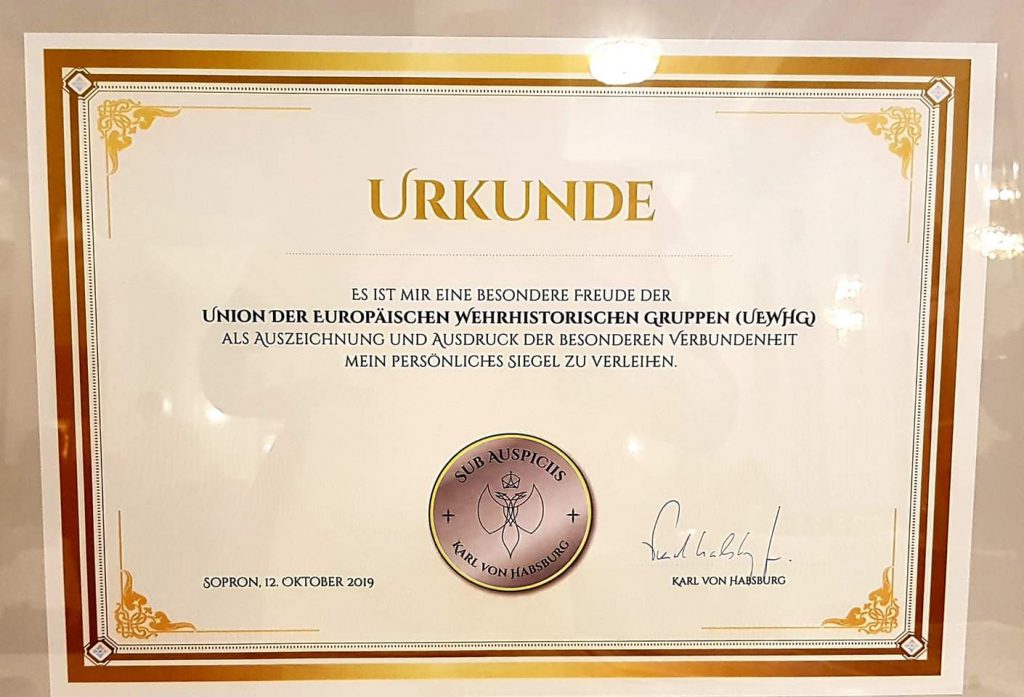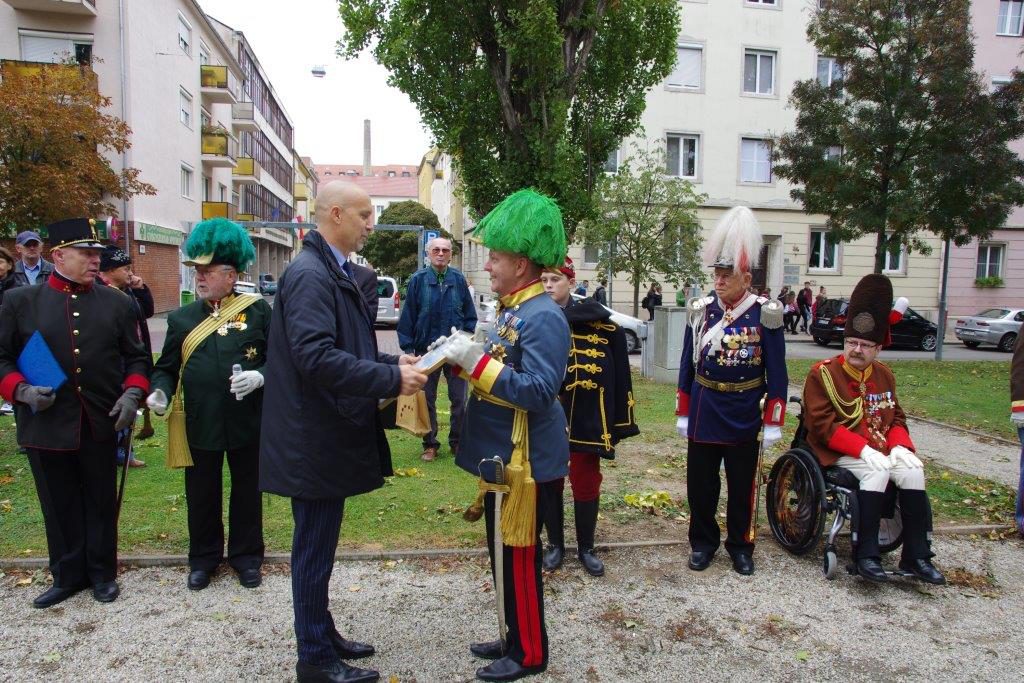During the
public ceremony the UEHMG received a special award at the General Rapport in
Sopron: the “Sub Auspiciis” seal of the House of Habsburg in the name
of SKKH Karl von Habsburg.
The following
are the speeches given by President of UEHMG Major General iTR Michael Blaha,
MSc, and Baron Vinzenz Stimpfl-Abele:
Speech of Major General iTR Michael Blaha, MSc:
Dear comrades, dear guests,
for us, the general rapport is not only the annual general meeting of
the Union of European Military Historical Groups, but also a time to perform
together in public.
This year we have chosen Sopron as the location for our general rapport,
because geographically it is almost the center of our union. This union with
almost 100 clubs in 15 European countries is a network of tradition and
camaraderie across time and borders.
As an umbrella organization, it is our job to maintain this network.
Mutual information and internal communication is an essential element. But if
we come together as in these days, we also want to show our diversity,
especially in the historical uniforms. I am therefore particularly pleased that
some Hungarian clubs, which are not yet members of us, have found to us today.
We all face great challenges again and again. Not everywhere we find
equal recognition for our commitment, sometimes there are also external
disturbances. And sometimes we just struggle with financial problems. We raised
these issues in our plenary session yesterday.
I am all the more pleased that our work has been honoured by the highest
authorities and that today we can welcome Baron Vinzenz Stimpfl-Abele,
procurator of the Order of St. George and in the name of His Imperial Highness
Karl von Habsburg. He will then address a few words to us.
I look forward to our time together this afternoon on our visit at
Esterhazy Castle and later dinner together. Tradition care also means care of
camaraderie and today we have really opportunity to do so.
I wish the Union of European Military Historical Groups further on
strong cohesion and I will use all my strength for our common values.
Thank you!
Speech
of Baron Vinzenz Stimpfl-Abele in the name of SKKH Karl von Habsburg:
It is an honor to be here present at the General Rapport in the
name of SKKH Karl von Habsburg and to hand over the seal “Sub
Auspiciis” to the umbrella organization of the Union of the European
Military Historical Groups.
Therefore, I am personally very happy to be able to make this high
distinction, because I feel to the military
historical groups from two perspectives especially connected. On the
one hand, because I am myself from an old family that has produced many
officers and therefore knows how important the personal past, individual memory
and remembering is. On the other hand, there is also the big aspect, namely,
that you can only understand history if you know it, and only if you understand
it, you can learn from it.
Therefore, what the military historical groups do is extremely valuable
and important: you keep the story alive by cultivating the tradition. And you
do that in a serious, profound way. George Bernhard Shaw is said to have said:
“Tradition is a lantern, the stupid clinging to her, the wise shining the
way.” In that sense Union of the European miltary
historical groups certainly counts among the wise!
And because
of that, I hereby grant you, dear President, the personal seal “Sub
Auspiciis” of Archduke Karl. It is awarded for 3 years and can then be
extended.
This personal seal of Karl von Habsburg is of course an award for the achievements so far, but also proof of confidence and mission for the future. In this sense: keep it up!
The UEHMG is proud of these seal and will do everything in its power to live up to this vote of confidence!

